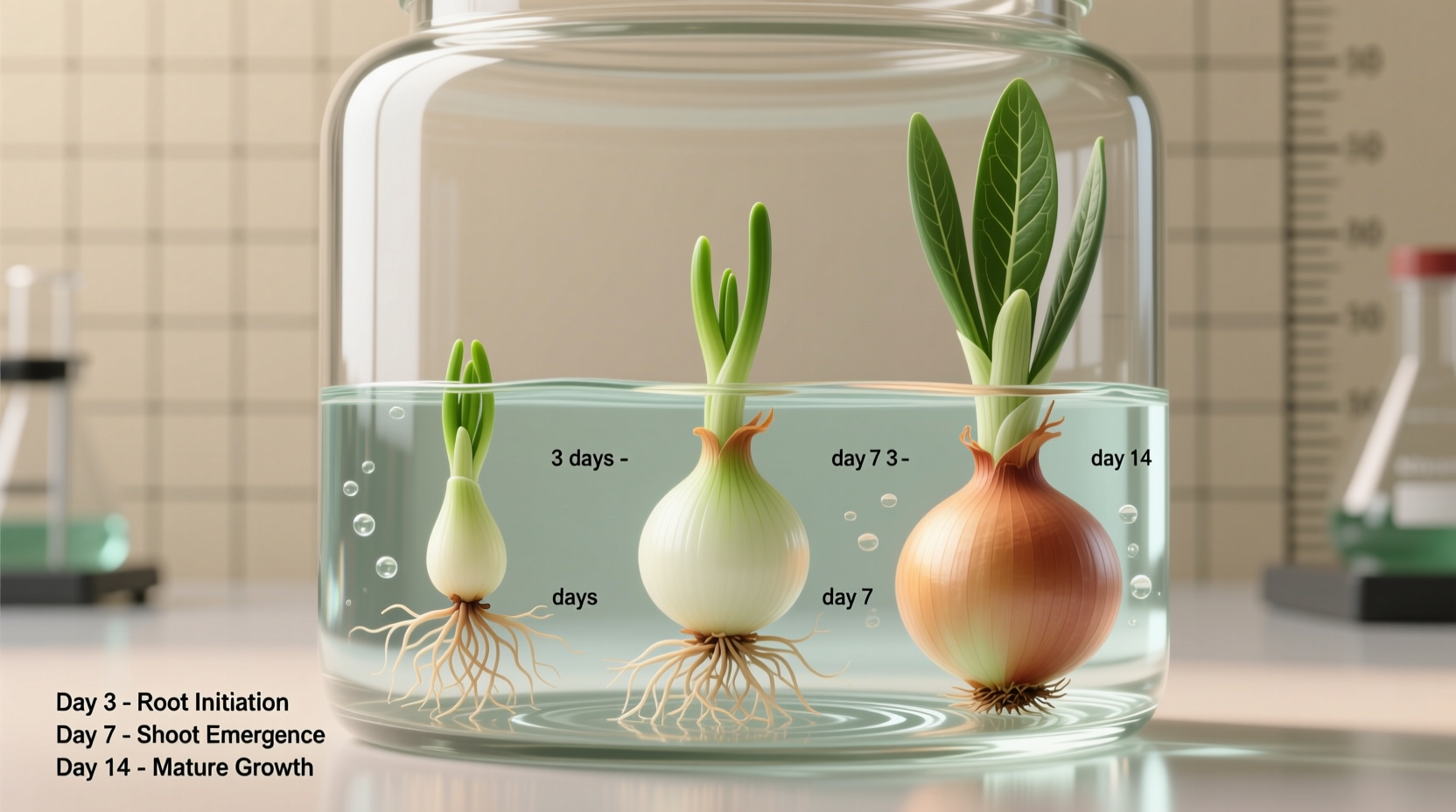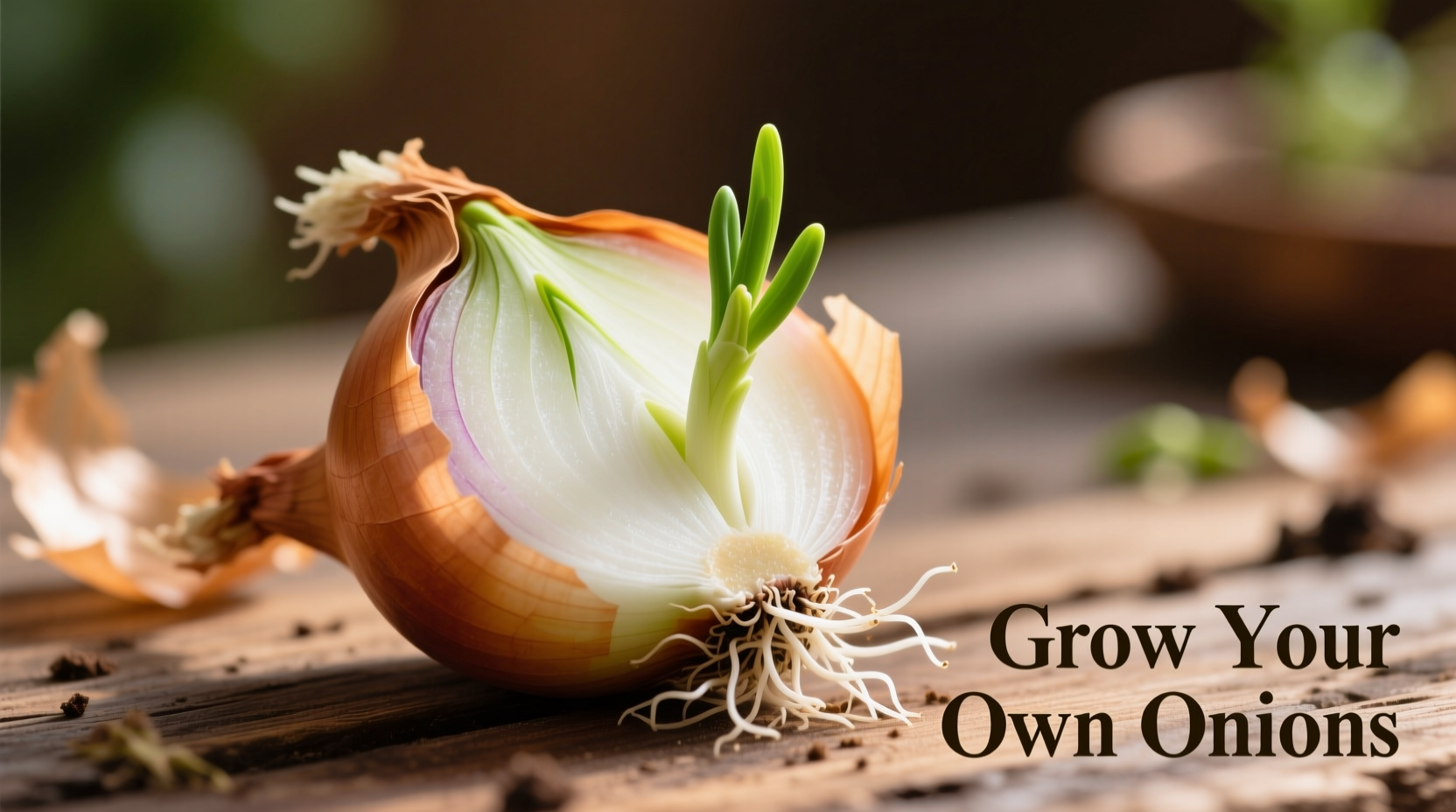What You Can (and Can't) Achieve with Onion Regrowth
Many gardeners mistakenly believe they can grow a complete onion bulb from scraps. According to the Oregon State University Extension Service, regrowing store-bought onions only produces green tops, not new bulbs. The energy stored in the root end supports leaf growth temporarily, but lacks sufficient resources for bulb formation.
Understanding this limitation prevents disappointment and helps you approach onion regrowth with realistic expectations. You'll get flavorful葱 for cooking, but not a replacement for planting onion sets or seeds if you want full bulbs.
Your Onion Regrowth Toolkit: What You Need
Successful onion regrowth requires minimal supplies:
- Onion with 1-2 inches of root end intact
- Shallow container (jar, cup, or bowl)
- Water or potting soil
- Sunny windowsill or grow light
| Regrowth Method | Water Required | Time to First Harvest | Longevity |
|---|---|---|---|
| Water method | 1-2 inches, refreshed every 2 days | 7-10 days | 3-4 weeks |
| Soil method | Keep moist but not soggy | 10-14 days | 2-3 months |
Step-by-Step Onion Regrowth Process
Preparing Your Onion Base
Cut 1-2 inches from the root end of a store-bought onion, preserving the root plate. Allow the cut surface to dry for 24 hours to prevent rotting—a crucial step recommended by the University of Florida Gardening Solutions. This healing period creates a protective barrier against pathogens.
Water Method: Quick Results
Place the onion base in a shallow container with just enough water to cover the roots (1-2 inches). Position where roots contact water but the bulb remains above the water line. Change water every 48 hours to prevent bacterial growth. Within 3-5 days, you'll see green shoots emerging.
Soil Method: Longer-Lasting Harvest
Plant the dried onion base in potting mix with the cut side up, just below soil surface. Water thoroughly then maintain consistent moisture. The soil method yields more robust growth and longer production according to Penn State Extension research, though initial growth appears slower than the water method.

Timeline: What to Expect Week by Week
Understanding the growth progression helps manage expectations:
- Days 1-3: Roots lengthen in water method; soil method shows little visible change
- Days 4-7: First green shoots appear (water method typically faster)
- Days 8-14: Harvest-ready葱 reach 4-6 inches tall
- Weeks 3-4: Water method declines; soil method continues producing
- Month 2: Soil-grown onions may show yellowing tips, signaling need for fertilizer
Troubleshooting Common Problems
Address these frequent issues to maximize your onion regrowth success:
Rotting Onion Base
If the base softens or develops mold, you've likely skipped the 24-hour drying period or submerged too much of the bulb. Remove from water, trim affected areas, and restart with proper technique. Prevention is better than cure—always allow cut surfaces to callous before regrowth attempts.
Yellowing or Wilting Greens
This indicates nutrient deficiency, especially in water-grown onions. Add liquid fertilizer (diluted to half strength) to water every two weeks. For soil-grown onions, apply balanced fertilizer monthly. The University of Minnesota Extension recommends nitrogen-rich formulas to support leafy growth.
Slow Growth
Inadequate light is the most common culprit. Onion greens require 6+ hours of direct sunlight daily. If growing indoors during winter months, supplement with a grow light positioned 6-12 inches above plants for 12-14 hours daily.
Harvesting and Using Your Homegrown Onion Greens
Clip greens when they reach 4-6 inches tall, taking no more than one-third of the plant at a time. Use immediately in:
- Omelets and scrambled eggs
- Soups and stews (add at the end of cooking)
- Salad garnishes
- Homemade salad dressings
Unlike store-bought scallions, your regrown greens have a milder flavor profile—closer to chives than mature onions. This makes them ideal for delicate dishes where strong onion flavor would overwhelm other ingredients.
Limitations of Onion Regrowth: What This Method Won't Do
Be aware of these important limitations:
- No bulb formation: You won't get a new onion bulb—only greens
- Declining quality: Flavor diminishes after 3-4 harvests
- Energy depletion: The original onion base provides finite energy
- Not for propagation: Won't produce viable seeds or sets for future planting
For complete onion bulbs, plant onion sets or seeds instead. Regrowth works best as a kitchen hack for continuous葱 between garden harvests.
When to Choose Regrowth vs. Traditional Planting
Consider these scenarios when deciding between methods:
- Choose regrowth when: You need immediate葱, have onion scraps available, or want a quick kitchen gardening project
- Choose traditional planting when: You want full onion bulbs, need larger quantities, or plan for long-term harvests
The water method delivers fastest results for immediate cooking needs, while soil-grown regrowth provides more sustainable production. Neither replaces planting for bulb development, but both offer valuable kitchen gardening options.











 浙公网安备
33010002000092号
浙公网安备
33010002000092号 浙B2-20120091-4
浙B2-20120091-4